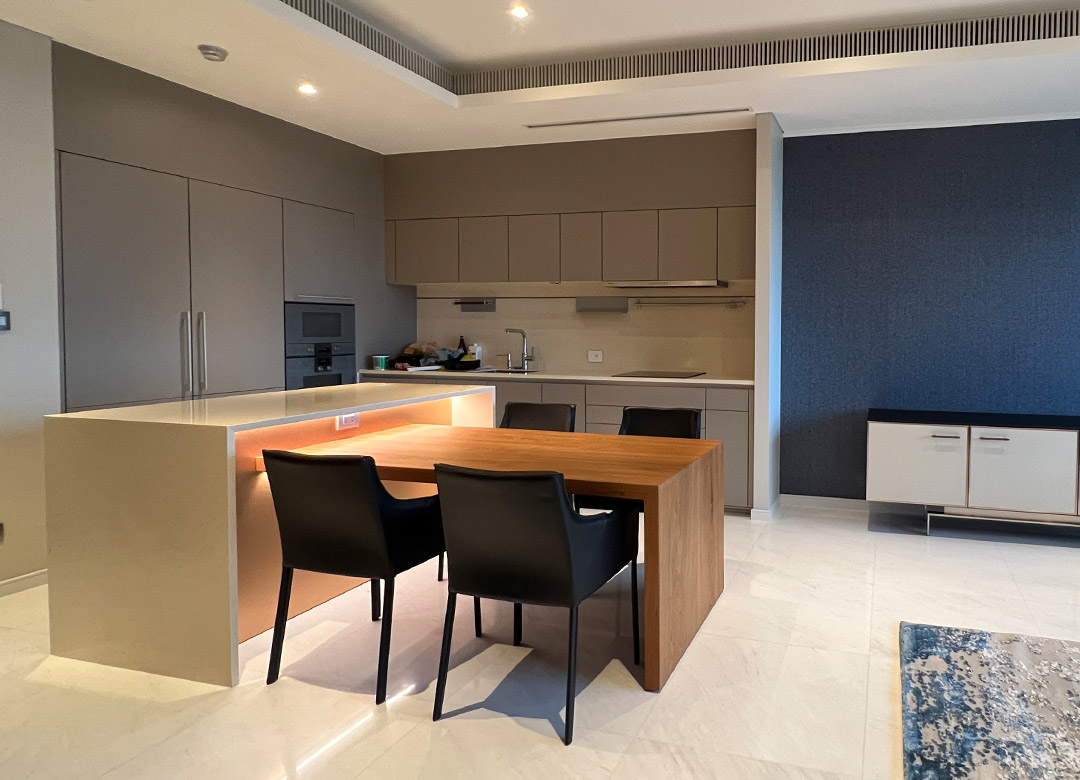Are you looking to enhance the functionality and aesthetic appeal of your kitchen? Including a kitchen island can be a fantastic solution. A kitchen island not only provides extra workspace and storage but also serves as a focal point in the room. Whether you have a small or large kitchen, incorporating a kitchen island can bring numerous benefits. In this article, we will explore some valuable tips for including a kitchen island in your kitchen to transform it into a more efficient and stylish space.
A kitchen island is a versatile addition to any kitchen, providing additional countertop space, storage, and a hub for socializing and entertaining. Interior Design Bangkok offers innovative and stylish solutions to transform your living spaces into personalized havens of beauty and functionality. However, before diving into the process, it is essential to plan and consider various factors to ensure the island seamlessly integrates into your kitchen’s layout and meets your specific needs.
Assessing your kitchen space
Before including a kitchen island, it is crucial to assess the available space in your kitchen. Measure the dimensions, taking into account the clearance required for comfortable movement around the island. Consider the traffic flow and ensure there is sufficient space to open cabinet doors and drawers without obstruction.
Determining the island’s purpose
Identifying the purpose of your kitchen island will guide its design and features. Are you primarily looking for extra storage, seating, or workspace? Do you plan to install appliances or a sink in the island? Understanding your needs will help you make informed decisions during the design process.
Choosing the right size and shape
The size and shape of your kitchen island should align with the available space and the overall kitchen design. In smaller kitchens, a compact or narrow island can maximize functionality without overwhelming the area. Larger kitchens can accommodate larger islands, providing ample workspace and storage.
Selecting suitable materials
The choice of materials for your kitchen island depends on your style preferences and budget. Popular options include natural stone, quartz, butcher block, stainless steel, and solid surface materials. Consider the durability, maintenance requirements, and visual appeal of different materials before making your selection.
Incorporating functional features
To make your kitchen island more efficient, consider incorporating functional features such as built-in cabinets, drawers, or open shelves. These additions provide convenient storage for utensils, pots, pans, and other kitchen essentials. Additionally, you can integrate appliances like a wine cooler, microwave, or dishwasher into the island, optimizing workflow and accessibility.
Ensuring proper placement
The placement of your kitchen island plays a crucial role in its functionality. It should be strategically positioned to facilitate easy movement and interaction with other kitchen elements. Avoid blocking important pathways and ensure there is adequate space for opening appliances and cabinets.
Enhancing lighting
Proper lighting is essential for both aesthetics and functionality. Install adequate lighting fixtures above your kitchen island to illuminate the workspace. Pendant lights or a combination of recessed and under-cabinet lighting can create a visually appealing and well-lit area.
Considering seating options
If you plan to incorporate seating into your kitchen island, decide on the type of seating that best suits your needs. Options include stools, chairs, or a combination of both. Consider the island’s height, overhang, and legroom to ensure comfortable seating arrangements.
Harmonizing with the overall design
To achieve a cohesive look, ensure your kitchen island harmonizes with the overall design of your kitchen. Consider the existing color scheme, cabinetry style, and countertop materials. Coordinating these elements will create a visually pleasing and unified space.
Maintenance and cleaning
It is essential to consider the maintenance and cleaning requirements of your kitchen island materials. Some surfaces may require regular sealing or special cleaning products to maintain their appearance and durability. Choose materials that align with your lifestyle and cleaning preferences.
Popular kitchen island styles
Explore various kitchen island styles to find inspiration for your own design. Popular styles include traditional, transitional, contemporary, farmhouse, and industrial. Each style offers unique characteristics that can complement your kitchen’s overall aesthetic.
Budgeting for your kitchen island
Setting a budget for your kitchen island project will help you prioritize features and materials. Determine how much you are willing to invest in the island and allocate funds accordingly. Remember to consider the cost of installation, electrical work, plumbing (if applicable), and any additional features you wish to include.
Hiring professional help
Designing and installing a kitchen island can be a complex task. Consider seeking professional assistance from an interior designer or a kitchen remodeling expert. They can provide valuable insights, optimize the use of space, and ensure the island seamlessly integrates into your kitchen.
Incorporating a kitchen island into your kitchen can significantly enhance its functionality and visual appeal. By following the tips mentioned in this article, you can successfully plan and implement a kitchen island that meets your specific requirements and transforms your kitchen into a more efficient and stylish space.




